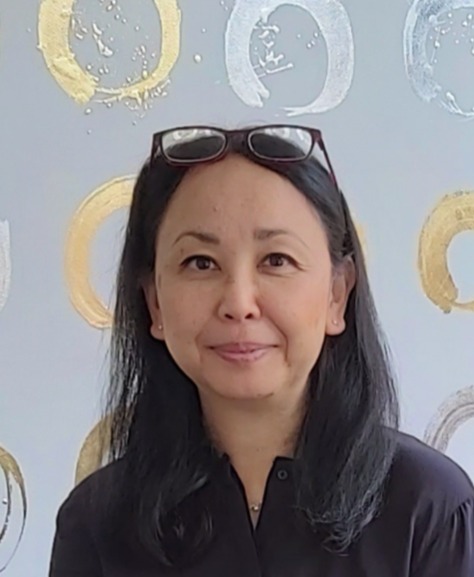Zen Enso
- Adele Cloony

- May 15, 2021
- 3 min read
Updated: Jun 22, 2021

After completing my project of one hundred Enso paintings, I thought I'd start my first blog about Ensos, as it has been the starting point for my artwork for many years now.
I initially started learning Chinese calligraphy to improve my energy work for my Tai Chi Sword form, as an extension of the body. Over the years I became so interested in how the Chinese characters were formed, originally from pictograms and about the energy expressed within the characters by amazing Masters of calligraphy.
I wanted to find a way to express and embody my energy and philosophies that resonated with me into paintings but with a non-linguistic base that transcends language.
The circle has many connotations, from emptiness/fullness or zero to infinity with its constant cycle, with no beginning or end and is an important symbol both in Buddhist and Taoist philosophies, from as early as 600 B.C.
In Sanskrit the word for circle is Mandala, which is seen in Eastern religions as the universe. It is also referenced to the shape of the sun or the moon, again possessing many spiritual meanings.
A circle is also often seen as the symbol of enlightenment and often depicted behind both Eastern and Western religious icons in paintings and statues.
Bodhidharma, a monk who travelled from India to China and then Japan, is attributed to being the founder of Zen Buddhism - which has its roots in both Chan Buddhism and Taoist philosophy.
Zen being the Japanese pronunciation for Chan (from the Sanskrit word Dhyana), meaning training the mind or meditation.
Enso is the Japanese word for circular shape and is synonymous with the Zen Enso.
Its earliest record was not on paper but was thought to be teachings by Chinese masters drawn in the air or in the ground. By around the eighth century the philosophy of emptiness and use of circles in Zen teachings were established.
There are stories that one of the first painted Zen Ensos was written in a message as teaching. However, the origins of the earliest painting, which is in existence today, is from the fifteenth century, by Zen master Yósó Sói in Japan.
There are also some examples of Ensos which were carved in wood in the seventeenth century.
The traditional Enso is more familiarly painted with black ink, with a single stroke, although two are also acceptable.

After quietening the mind, with "no mind" - contemplating emptiness, connecting mind and body, becoming one with all things - no separateness but all interconnected, being in the present moment.
It is made in the moment - in a state of total presence, with a single breath.
It is thought that the person's heart and mind is embodied in the Enso.
Sometimes the Enso does not seem to have a "perfect" form or has an opening, an incompleteness and perhaps seen as an imperfection. This embraces the Japanese philosophy of Wabi Sabi, which is also rooted in Zen Buddhism, accepting imperfections
and transience. All Ensos are unique not only in form but by the painter.

Traditionally with oriental paintings, there is a red seal and a short description or poem, which sometimes directs you to the mind of the artist. I chose to omit my red seal to give my Ensos a contemporary feel but I thought it was nice to write a few lines on my instagram posts with each of the one hundred Ensos.
Using contemporary mixed media and incorporating silver and gold leaf for me, incorporates the reflective qualities of looking within and reinforcing the concepts of realising the non-duality of emptiness and luminosity.
Throughout my 100 days of Enso painting project, I used a variety of mixed media and techniques to produce a mixture of traditional and modern pieces.
Whilst looking through them, I hope that you might find them contemplative, with a sense of calmness and tranquility.
They are available to purchase from my online store, to create your own peaceful space in your home or office, where you can reflect and bring harmony to your well being.

Great blog - very informative and a good insight in to the foundation for your artwork